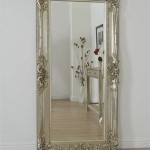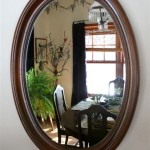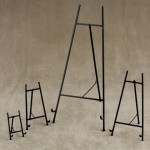How To Mirror iPhone to Old TV or Computer
Displaying the screen of an iPhone on a larger display, such as an older television or a computer monitor, can enhance viewing experiences for videos, presentations, or gaming. This article will detail various methods to achieve iPhone screen mirroring on older TVs and computers, focusing on the necessary hardware, software, and configuration steps.
Mirroring an iPhone to modern smart TVs is often straightforward using AirPlay or built-in screen mirroring protocols. However, older devices that lack these features require alternative solutions. These solutions frequently involve adapters, intermediary devices, or specific software applications designed to bridge the compatibility gap between the iPhone and the older display.
The following sections will explore the common methods for mirroring an iPhone screen to an older television or computer, including their associated advantages, disadvantages, and specific setup instructions. This guide aims to provide a comprehensive understanding of the available options, enabling users to choose the method that best suits their needs and available resources.
Using an HDMI Adapter
One of the most prevalent and reliable methods for mirroring an iPhone to an older television or computer monitor is using an HDMI adapter. This approach involves connecting the iPhone to the display device via a physical cable, ensuring a stable and consistent connection.
To use an HDMI adapter, an Apple Lightning Digital AV Adapter or a third-party equivalent is required. This adapter connects to the Lightning port on the iPhone and provides an HDMI output. The HDMI cable then connects the adapter to the HDMI input on the older television or computer monitor. It's important to ensure the television or monitor possesses an available HDMI port for this method to work.
Once the physical connections are established, the television or monitor needs to be set to the correct HDMI input source. This is typically achieved by using the television's or monitor's remote control or on-device buttons to cycle through the available input options until the iPhone's screen is displayed. The iPhone screen will then be mirrored, displaying whatever is on the iPhone screen onto the larger display.
The primary advantage of using an HDMI adapter is its simplicity and reliability. It provides a direct connection, minimizing the risk of lag or connectivity issues that can occur with wireless methods. Furthermore, it typically supports high-definition video and audio output, providing a clear and immersive viewing experience. The adapter also often includes a Lightning port for charging the iPhone while mirroring, preventing battery drain during extended use.
A potential disadvantage of this method is the physical cable requirement. The user is tethered to the display device, limiting mobility. Additionally, the cost of the Apple Lightning Digital AV Adapter can be relatively high compared to other mirroring solutions. However, third-party adapters are often available at lower prices, although it is important to consider their compatibility and reliability before purchasing.
Compatibility can also be a factor. Some older televisions might not support the resolution output by the iPhone, resulting in a distorted or cropped image. In such cases, adjusting the display settings on the iPhone might be necessary to achieve optimal compatibility. Additionally, some digital rights management (DRM) protected content, such as certain streaming services, might restrict mirroring through HDMI connections, preventing the content from being displayed on the external screen.
Another potential drawback is the management of multiple cables. The HDMI cable, the adapter, and potentially a charging cable can create clutter. However, the stability and simplicity of this method often outweigh this inconvenience for many users.
Utilizing a VGA Adapter (for Older Monitors)
For older computer monitors or televisions that lack an HDMI input, a VGA adapter can be employed. VGA (Video Graphics Array) is an analog video interface that was prevalent before the widespread adoption of HDMI. While VGA connections don't support audio, they can still be used for mirroring the iPhone screen for visual content.
To use a VGA adapter, an Apple Lightning to VGA Adapter or a compatible third-party adapter is needed. This adapter connects to the Lightning port on the iPhone and provides a VGA output. A VGA cable then connects the adapter to the VGA input on the older monitor or television. As VGA does not carry audio, a separate audio cable, typically a 3.5mm audio cable, will be needed to connect the iPhone's headphone jack (if present) or Lightning-to-3.5mm adapter (if necessary) to the audio input of the monitor or television, or to an external speaker system.
Once the VGA and audio connections are established, the monitor or television needs to be set to the correct VGA input source. The iPhone screen will then be displayed, although the image quality may be lower compared to HDMI due to the analog nature of the VGA signal. Also note that some modern iPhones don't have a 3.5mm port and would need a Lightning to 3.5mm adapter.
The advantage of using a VGA adapter is its compatibility with very old display devices that lack HDMI inputs. This makes it a viable option for repurposing older equipment. It can also be a more cost-effective solution compared to purchasing a new display device with HDMI capabilities.
The disadvantages of using a VGA adapter are several. The image quality is generally lower than HDMI, with potential for blurring or signal degradation. The absence of audio through the VGA connection necessitates a separate audio cable, adding to the complexity of the setup. The adapter itself, along with the VGA and audio cables, can create cable clutter. Furthermore, VGA does not support higher resolutions, limiting the clarity of the mirrored image.
Compatibility issues can also arise. Some older monitors might not support the specific refresh rate or resolution output by the iPhone, leading to a distorted or unstable image. Adjusting the display settings on the iPhone or the monitor might be necessary to address these issues. DRM-protected content may also restrict mirroring through VGA connections.
Despite its limitations, a VGA adapter provides a functional solution for mirroring an iPhone screen to older display devices that lack HDMI connectivity. It is a practical option for users who prioritize compatibility with older equipment over image quality and convenience.
Using Software Applications and Wireless Adapters
For users who prefer a wireless solution, software applications and wireless adapters can be used to mirror an iPhone screen to an older television or computer. This approach typically involves installing a software application on the computer or using a dedicated wireless adapter that connects to the television.
Several software applications, such as AirServer or Reflector, allow a computer to act as an AirPlay receiver. AirPlay is Apple's proprietary wireless streaming protocol. By installing one of these applications on a computer connected to the older television, the iPhone can wirelessly mirror its screen using AirPlay.
To use this method, the computer and the iPhone must be connected to the same Wi-Fi network. The software application needs to be running on the computer. On the iPhone, open the Control Center (swipe down from the top-right corner or swipe up from the bottom, depending on the iPhone model), tap the "Screen Mirroring" button, and select the computer from the list of available devices. Once connected, the iPhone screen will be mirrored to the computer, which will then display it on the connected television.
An alternative approach involves using a dedicated wireless adapter, such as a Chromecast or a Miracast dongle. These adapters connect to the HDMI port of the older television and allow the iPhone to wirelessly mirror its screen using protocols like Google Cast (Chromecast) or Miracast.
To use a Chromecast, the Chromecast device needs to be set up using the Google Home app on the iPhone. The iPhone and the Chromecast must be connected to the same Wi-Fi network. Within supported apps (such as YouTube or Netflix), a Cast button will appear, allowing the user to stream content directly to the Chromecast. For screen mirroring, some third-party apps are needed to achieve this, as direct iPhone screen mirroring to Chromecast isn't natively supported. It's worth considering the potential security implications and user reviews before using any third-party mirroring app.
Miracast dongles offer a more direct screen mirroring solution. The Miracast dongle connects to the HDMI port of the television. On the iPhone, a compatible mirroring app needs to be installed. The app will then search for and connect to the Miracast dongle, enabling screen mirroring.
The advantage of using software applications or wireless adapters is the convenience of wireless connectivity. This eliminates the need for physical cables, providing greater mobility and flexibility. Also, there are no Lightning port compatibility issues that may come with adapters.
The disadvantages of this method include potential lag or connectivity issues depending on the strength and stability of the Wi-Fi network. The image quality may also be lower compared to direct HDMI connections. Furthermore, the setup process can be more complex, requiring the installation and configuration of software applications or adapters.
Compatibility issues can also arise. Some older televisions might not be compatible with the specific wireless protocols used by the software applications or adapters. Security concerns may also be a factor, as wireless connections can be vulnerable to unauthorized access. Finally, relying on third-party applications introduces a degree of uncertainty – the applications can be withdrawn, require payment, or have privacy issues.
While wireless mirroring offers convenience, it is essential to consider the potential drawbacks and ensure the chosen method is compatible with the existing hardware and network infrastructure. Users should carefully evaluate the trade-offs between convenience and performance before selecting a wireless mirroring solution.

How To Mirror Iphone Windows Pc Laptop Mac Full Guide

How To Screen Mirror Your Iphone A Tv Or Computer

How To Mirror Iphone Tv Without Apple Airdroid

Simple Ways To Mirror Iphone Tv Without Wifi 6 Steps

How To Mirror Iphone Tv Without Apple Airdroid

Screen Mirroring Iphone To Tv Step By Guide Istreamer

Best Ways To Mirror Iphone Philips Smart Tv
Screen Mirroring Iphone To Tv With Or Without Airplay

How To Connect Your Iphone Se Tv Mobile Fun Blog

Screen Mirroring A Phone Ipad Or Laptop To Tv How Push Your The Big








